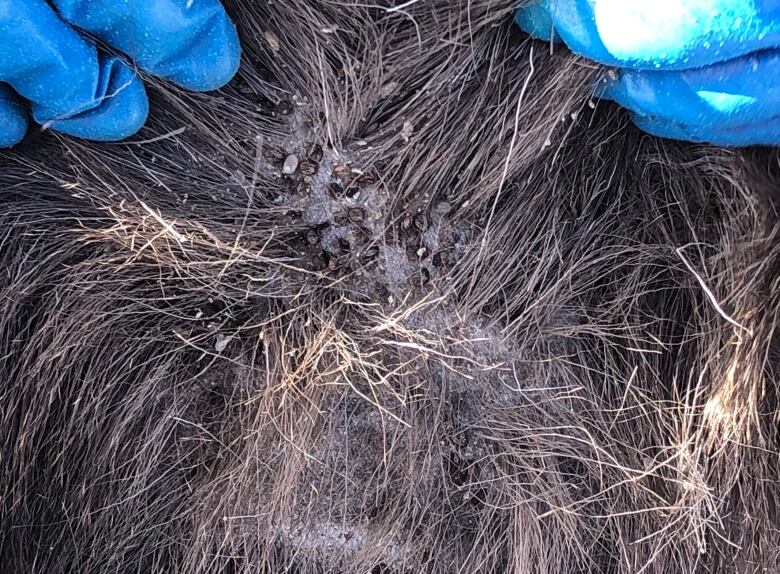Researchers from the universities of New Brunswick and Laval are studying how ticks survive in the climates of New Brunswick and Quebec and how that affects moose. Capturing a moose in a net shot from a helicopter, researchers find the animal covered in thousands of ticks.

This story is part of a CBC News series entitled In Our Backyard, which looks at the effects climate change is having in Canada, from extreme weather events to how it’s reshaping our economy.
Flying over southern New Brunswick in a helicopter, it doesn’t take long to spot moose running through the snow in the forest beneath. What isn’t visible from the air are the thousands of ticks invading their bodies.
In nearby New Hampshire and Maine, over a three-year period, scientists found an alarming 70 per cent of calves didn’t make it through their first winter due in large part to tick infestation, according to a study in the Canadian Journal of Zoology. In some cases up to 80,000 ticks were found on a single moose.

Researchers from the universities of New Brunswick and Laval are now studying how ticks survive in the differing climates of New Brunswick and Quebec and how that affects moose. Their data show moose populations in both provinces have been healthy and growing over the past three decades, but wildlife biologist Serge Couturier says warmer winters and less snow cover make it easier for ticks to survive.
“Global warming is likely increasing their abundance,” he said in an interview in the woods near Tracy, N.B. “The northern limit is moving north and north and north.”
External parasites
Ticks are an external parasite. They feed on the animal’s blood, staying on their skin for the fall and winter, until they drop off to lay their eggs on vegetation. These ticks do not pose any health risks to humans.
Jean-Pierre Tremblay, a professor in the department of biology at Laval University in Quebec City and principal i

